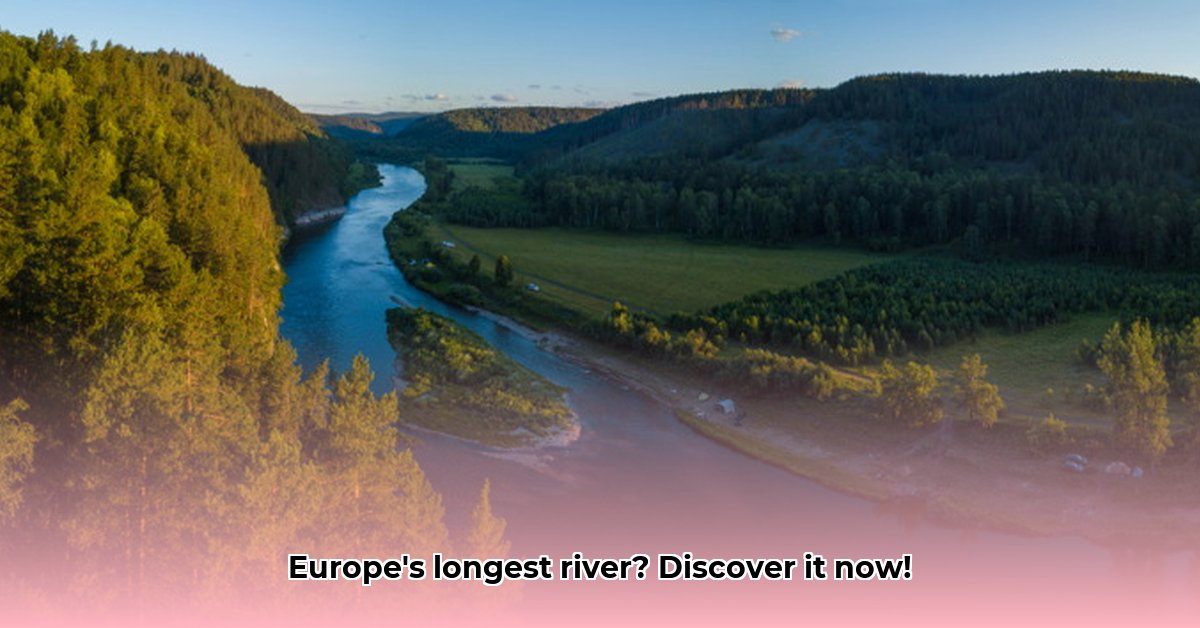
Europe's Water Veins: A Journey Through its Longest Rivers
Imagine a ribbon of water, snaking its way for thousands of kilometres, shaping landscapes, supporting economies, and reflecting centuries of history. That's the reality of Europe's longest rivers, vital arteries that pulse with life and challenge. This journey explores these magnificent waterways, uncovering their significance, the threats they face, and how we can ensure their future.
The Volga, Europe’s undisputed longest river, stretches over 3,500km, a meandering path through the heart of Russia. It's not just a geographical marvel; it's a cultural icon, deeply interwoven into the fabric of Russian life for centuries. But its immense size brings immense challenges. How does a river of this scale impact the surrounding environment and how do we navigate the complexities of its management? This is something we'll delve into in more detail. Are you ready, tjommies? Let's get started!
The Volga: A Giant Among Rivers
The Volga's sheer length – almost surpassing the entire distance from Cape Town to Johannesburg! – is only the beginning. This is a river whose influence on Russia's economy – its agricultural output, industrial activity, and transport networks – is undeniable. For generations, its waters have nourished communities, facilitated trade, and powered industry. Its significance is etched into the very soul of Russia, a true national treasure.
Its journey begins in the Valdai Hills, a gentle cradle for the mighty river to come. From there, it snakes through diverse landscapes, a powerful force shaping the terrain it flows through. Imagine the grandeur of witnessing this vast river, its waters reflecting the ever-changing Russian sky. Yet, this majestic body of water faces equally significant threats. The harsh Russian winters, for instance, bring icy challenges to navigation, regularly halting shipping traffic. Furthermore, while hydroelectric dams provide power, they alter the river's natural flow, impacting the delicate ecosystem dependent on this water supply.
The Danube: A Multinational Marvel
While the Volga reigns supreme in length, the Danube takes a unique place, weaving its way through ten different countries. This shared river is both a precious resource and a source of potential conflict. Its international status requires a high degree of cooperation between nations, a feat that is crucial for its sustainable management. Can we find a way to manage shared resources fairly and effectively? This is question mark that hangs over the success of preserving the Danube.
The Danube’s journey is a testament to international collaboration, forcing these very different countries to negotiate their reliance on this shared river system. The river highlights the complex interplay between geography, politics, and sustainable resource management.
Other Notable European Rivers
Beyond the giants, other European rivers hold significant roles. The Dnieper and Don, for example, are crucial for the agricultural and industrial sectors of Eastern Europe, while tributaries like the Oka and Ural feed into the Volga's vast network, contributing further complexities to the region's hydrology. Each of these rivers tells its own story, shaping the unique character of its surrounding land.
Challenges and Opportunities: A Path to the Future
Europe's longest rivers are not mere geographical features; they are the lifeblood of commerce, energy production, and ecological balance. Yet, looming threats like climate change, pollution, and unsustainable development cast a long shadow. How can we ensure their continued prosperity?
Enhanced Flood Prediction: Investing in advanced forecasting systems can substantially reduce the impact of floods, particularly in vulnerable areas like the Dniester river valley. This requires a combination of technology and community engagement.
Sustainable Tourism: Responsible tourism initiatives offer an opportunity to boost the local economy while protecting the environment. This involves careful planning and community cooperation.
International Collaboration: Transboundary rivers like the Danube need collaborative management to ensure fair resource allocation and environmental protection. This requires diplomatic skill and a deep understanding of each involved nation's needs.
Modernising Infrastructure: Investing in ice-breaking technology and improved navigation infrastructure can boost trade and transportation, especially on rivers prone to freezing. This would represent a significant investment in infrastructure.
A Glimpse into the Future
The future of Europe's longest rivers rests on our collective choices; will we allow short-term gains to compromise long-term sustainability? The answers lie in forward-thinking planning, international cooperation, and a steadfast commitment to sustainable river management. These majestic waterways are our shared responsibility – let's work together to protect them.
"The health of our rivers is inextricably linked to the health of our planet," says Professor Anya Petrova, Head of Hydrology at the Russian Academy of Sciences. "Sustainable management is not just an option; it's a necessity." Her words underline the gravity of the task ahead. We must act now.